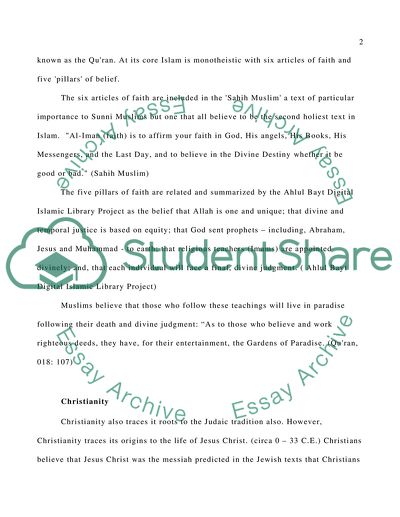Cite this document
(Islam and Christianity: Comparisons and Contrasts Research Paper, n.d.)
Islam and Christianity: Comparisons and Contrasts Research Paper. Retrieved from https://studentshare.org/religion-and-theology/1745496-islam-vs-christianity
Islam and Christianity: Comparisons and Contrasts Research Paper. Retrieved from https://studentshare.org/religion-and-theology/1745496-islam-vs-christianity
(Islam and Christianity: Comparisons and Contrasts Research Paper)
Islam and Christianity: Comparisons and Contrasts Research Paper. https://studentshare.org/religion-and-theology/1745496-islam-vs-christianity.
Islam and Christianity: Comparisons and Contrasts Research Paper. https://studentshare.org/religion-and-theology/1745496-islam-vs-christianity.
“Islam and Christianity: Comparisons and Contrasts Research Paper”, n.d. https://studentshare.org/religion-and-theology/1745496-islam-vs-christianity.


